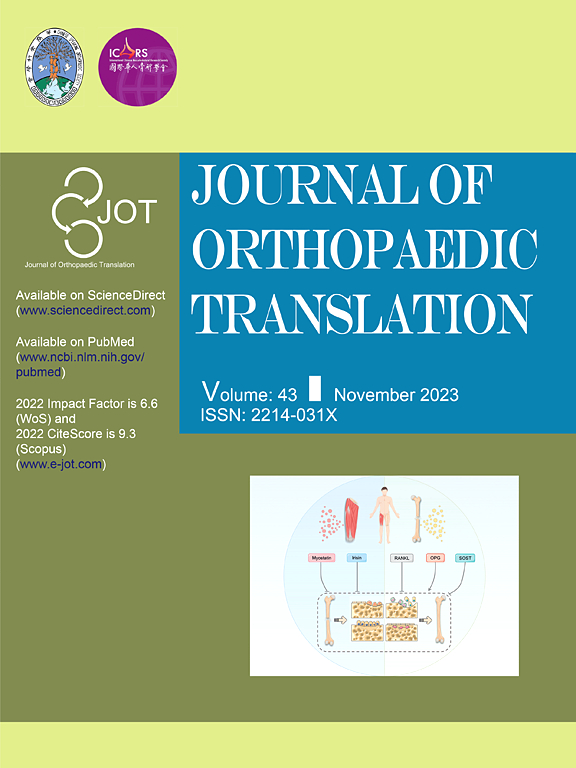Gradient scaffolds in bone-soft tissue interface engineering: Structural characteristics, fabrication techniques, and emerging trends
IF 5.9
1区 医学
Q1 ORTHOPEDICS
引用次数: 0
Abstract
Bone and soft tissues are connected by a complex interface that is crucial for the smooth transfer of mechanical stress. Effective repair of this interface requires bio-scaffolds specifically designed to support the regeneration of diverse cell types and signalling molecules. With advances in micro- and nanotechnologies, gradient biomaterial scaffolds have demonstrated significant potential in interface tissue regeneration. This paper reviews the structure of the bone-soft tissue interface, the various gradient scaffold types, and construction methods. It also discusses the recent developments and future directions in interface tissue engineering, emphasizing the potential of gradient scaffolds to restore the natural structure and function of bone-soft tissue interfaces. Overall, this paper provides valuable insights into the application of gradient scaffolds for bone-soft tissue interface engineering, offering inspiration for biomimetic approaches to soft-hard interface repair in future medical engineering.
The Translational Potential of this Article
First, the emphasis on gradient scaffolds could significantly impact clinical practices related to bone-soft tissue integration, ultimately improving patient outcomes and quality of life. Second, it also aligns with the growing trend of biomimetic approaches in medical engineering, potentially inspiring new innovations in bone-soft tissue repair strategies.

求助全文
约1分钟内获得全文
求助全文
来源期刊

Journal of Orthopaedic Translation
Medicine-Orthopedics and Sports Medicine
CiteScore
11.80
自引率
13.60%
发文量
91
审稿时长
29 days
期刊介绍:
The Journal of Orthopaedic Translation (JOT) is the official peer-reviewed, open access journal of the Chinese Speaking Orthopaedic Society (CSOS) and the International Chinese Musculoskeletal Research Society (ICMRS). It is published quarterly, in January, April, July and October, by Elsevier.
 求助内容:
求助内容: 应助结果提醒方式:
应助结果提醒方式:


